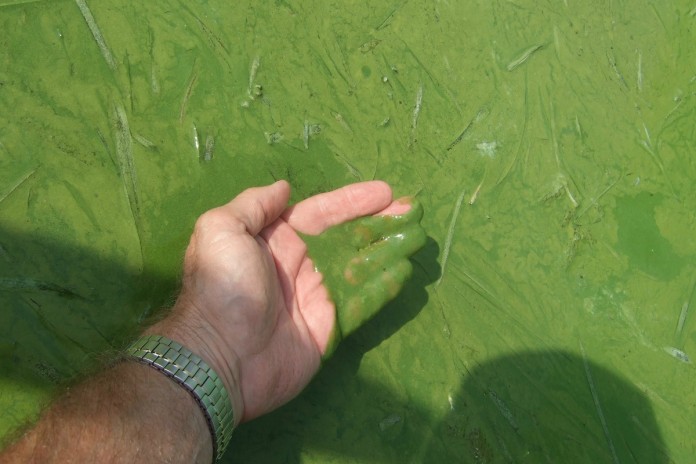COLUMBUS — Researchers at The Ohio State University are investigating new techniques to detect organic phosphorus compounds in water samples from the Lake Erie watershed.
Their goal is to develop unique phosphorus signatures that can provide a clue to the origin of phosphorus found fueling harmful algal blooms (HABs).
Dr. Paula Mouser, assistant professor in the Department of Civil, Environmental and Geodetic Engineering and PhD candidate Michael Brooker collected samples from six different sources in the Sandusky River watershed: chicken, dairy and hog farm manure, runoff from farm fields with row crops, and wastewater treatment plant discharge, along with river water from farther downstream.
Different compounds
Within each of those samples, the researchers detected between 100 and 300 different organic phosphorus compounds, based on preliminary study data. The results of this analysis will develop into a unique signature for each of the samples, showing both similarities and major differences.
For example, the farm field runoff and the treatment plant discharge had the highest number of shared phosphorus compounds, while the manures had more unshared, unique formulas.
“Right now we are characterizing what the phosphorus signature is for each of those sources,” said Mouser. “As the ultimate goal, once we know which phosphorus compounds come from each source, we can try to link those organic phosphorus compounds in rivers and lakes impacted by HABs to a likely upstream source location.”
Focussing efforts
The researchers hope that pulling all of this information together will help guide pollution management strategies in the Sandusky River watershed by focusing efforts on specific phosphorus sources that contribute most to the total phosphorus going into the watershed.
The project is funded by Ohio State’s Field to Faucet Initiative and by the Ohio Department of Higher Education’s Harmful Algal Bloom Research Initiative (HABRI), which is managed by Ohio Sea Grant.
More information about other projects in these initiatives is available online at go.osu.edu/habsinfo.










